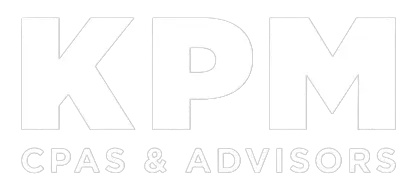When the One Big Beautiful Bill Act (OBBBA) was signed into law on July 4, 2025, it included many changes. Some of these changes include extensions and enhancements on tax breaks for businesses. However, when it comes to business-related clean energy tax breaks, the legislation terminated several of them earlier than originally scheduled. One example is the Qualified Commercial Clean Vehicle Credit (Section 45W) that had originally been scheduled to expire after 2032. Since the enactment of the OBBBA, this credit is now only available for vehicles that were acquired on or before September 30, 2025. There are additional clean energy tax breaks businesses can still take advantage of if they act fast.
Deduction For Energy-Efficient Building Improvements
The Section 179D deduction allows owners of new or existing commercial buildings to immediately deduct the cost of certain energy-efficient improvements rather than depreciate them over the 39-year period that typically applies. The OBBBA terminates the Section 179D deduction for property beginning construction after June 30, 2026.
Besides commercial building owners, eligible taxpayers include:
- Tenants and real estate investment trusts that make qualifying improvements
- Certain designers — such as architects and engineers — of government-owned buildings and buildings owned by non-profit organizations, religious organizations, tribal organizations, and nonprofit schools or universities
The Section 179D deduction is available for new construction as well as additions to or renovations of commercial buildings of any size. (Multifamily residential rental buildings that are at least four stories above grade also qualify). Eligible improvements include depreciable property installed as part of a building’s interior lighting system, HVAC and hot water systems, or the building envelope.
To be eligible, an improvement must be part of a plan designed to reduce annual energy and power costs by at least 25% relative to applicable industry standards, as certified by an independent contractor or licensed engineer. The base deduction is calculated using a sliding scale, ranging from 50 cents per square foot for improvements that achieve 25% energy savings to $1 per square foot for improvements that achieve 50% energy savings.
Projects that meet specific prevailing wage and apprenticeship requirements are eligible for bonus deductions. Such deductions range from $2.50 per square foot for improvements that achieve 25% energy savings to $5 per square foot for improvements that achieve 50% energy savings.
Other Clean Energy Tax Breaks For Businesses
Here are some additional clean energy breaks affected by the OBBBA:
Alternative Fuel Vehicle Refueling Property Credit (Section 30c). The OBBBA eliminates the credit for property placed in service after June 30, 2026. (The credit had been scheduled to sunset after 2032). Property that stores or dispenses clean-burning fuel or recharges electric vehicles is eligible. The credit is worth up to $100,000 per item (each charging port, fuel dispenser, or storage property).
Clean Electricity Investment Credit (Section 48E) & Clean Electricity Production Credit (Section 45Y). The OBBBA eliminates these tax credits for wind and solar facilities placed in service after 2027, unless construction begins on or before July 4, 2026. Wind and solar projects begun after that date must be put in service by the end of 2027.
Advanced Manufacturing Production Credit (Section 45x). Under the OBBBA, wind energy components won’t qualify for the credit after 2027. The legislation also modifies the credit in other ways. For example, it adds “metallurgical coal” suitable for the production of steel to the list of critical minerals. And, for critical materials other than metallurgical coal, the credit will now phase out from 2031 through 2033. The credit for metallurgical coal expires after 2029.
Act Soon
Many of these clean energy tax breaks are disappearing years earlier than originally scheduled, leaving limited time for businesses to act. If your business has been exploring clean energy investments, now is the time to consider moving forward. We can help you evaluate eligibility, utilize available tax breaks, and structure projects to meet applicable requirements before time runs out. Contact us today to discuss what steps you can take to capture tax benefits while they’re available.


